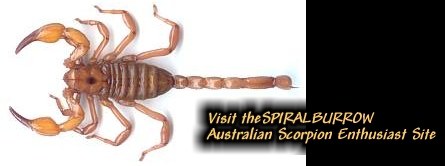


What are tarantula's??
Mygales comprise trapdoor spiders, mouse spiders, funnellwebs and brush-footed trapdoors. There are two families within the Australian brush-footed trapdoors[ Barychelidae and Theraphosidae]. Theraphosids are the tarantulas and differ from barychelids by having long spinnerets as opposed to short, blunt ones. Theraphosids also have a more pronounced foveal groove (this is the groove in the middle of the carapace.) This is about where the differences end. Both have claw tufts that enable them to climb walls easily. Some Barychelids can also "hiss" when aggravated, just like the theraphosids. In fact, spiders from the families Theraphosidae and Barychelidae are often changed between each other as new taxonomic papers emerge. Thankfully, this is yet to happen in Australia. Some species of Barychelid (particularly from the genus Idiomnata) look for the entire world like a Theraphosid, with the one exeption, blunt spinnerets.
Basically, your spider should be covered in a layer of fine velvety setae (bristles) with some longer setae on the legs, should have long spinnerets like funnellwebs and can probably hiss when aggravated (with the exeption of some Phlogiellus sp.). Lastly, if your spider can climb walls, regardless of its size, you’ve got yourself a theraphosid.

